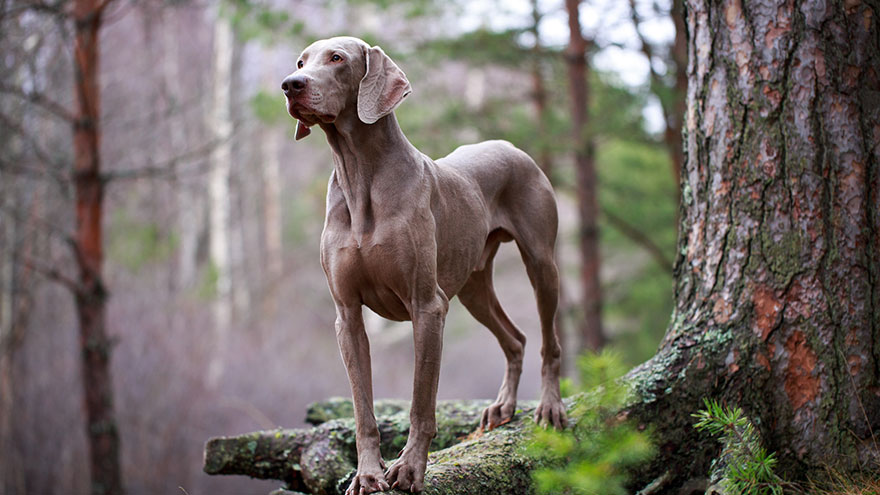Weimaraner Training Guide
There are really two levels to consider when thinking about training a Weimaraner. As with all purebred dogs, obedience training and housetraining/housebreaking are the most common and basic types of instruction that you should consider for your new pet, which is the first level.
Additionally, Weimaraners are very intelligent and eager to please, so training them is not always a major hurdle. On the other hand, the Weimaraner can be a bit headstrong, even stubborn, so patience will be necessary in most cases.
How to Train Weimaraner
First, remember that the Weimaraner is a hunting dog by nature and this large, quick canine can be dangerous to small animals and birds. In addition, the Weimaraner is a house dog, preferring to live with the master. This breed does not do well in a kennel or outside.
You may want to seriously, consider obedience training to tame some of the energy in the Weimaraner. Be patient and look at the process over the long term, however.
Training must be gentle because this breed does not respond well to harsh treatment. Yet, the methods must be firm and consistent if you expect positive response.
Crate training may be necessary for housebreaking your Weimaraner. Just remember, if you go about this in the correct way, the dog will see the crate as a “den” that he will naturally want to keep clean.
Furthermore, if you leave the door open and entice the dog into the crate with small, healthy treats and a soft blanket, you may be surprised to see that your new pet takes to his home quite well. It is also important to have the dog go into the crate for short periods when you are home to prevent the dog from feeling that the crate is punishment or a place to be locked up when you are gone.
The second level of training that may be important to a Weimaraner is field training or training for live hunting. The breed existed for years as a hunting dog and is one of the rare canines that has webbed feet for better swimming. The first Weimar pointers were recognized as a breed in Europe in the 1800s.
Breeding was strictly controlled to maintain the quality of bloodlines. There was a boom in interest in the Weimaraner in the 1950s that weakened the bloodlines. As more people sought the dog as a status symbol, the number of ill-bred dogs appeared.

The breed is still one of the 50 most popular dogs in America and breeding problems are being addressed continuously. Keep in mind that many people have found that a well-bred Weimaraner makes an excellent hunting dog that may excel in field competition.
This breed is included in the list of dogs that appear and do well in field trials, along with the English Setter, German Shorthaired Pointer, Irish Setter, and others.
For the best results, most experienced owners and hunters recommend a professional trainer that works with top field or hunting dogs. The methods vary, but almost all concentrate first on basic commands for directing and controlling the dog in the open.
There are also some well-known, tried-and-true tricks for training older dogs that may seem set in their ways. Then, it is important to start early in training a hunting or field Weimaraner.
This breed can be trained to hunt fur-bearing animals as well as birds and will work in the field or in the water. The Weimaraner may not point with the great intensity of a full-blooded pointer or retrieve with the splash of a Labrador, but this is a fine hunting/field dog.
We recommend you find a professional trainer and start a great relationship with your Weimaraner.
Read More About Weimaraner
- Weimaraner Breed Information
- Weimaraner : 10 Most Common Questions
- Weimaraner Health Guide
- Owning A Weimaraner : Breeder Recommendations

